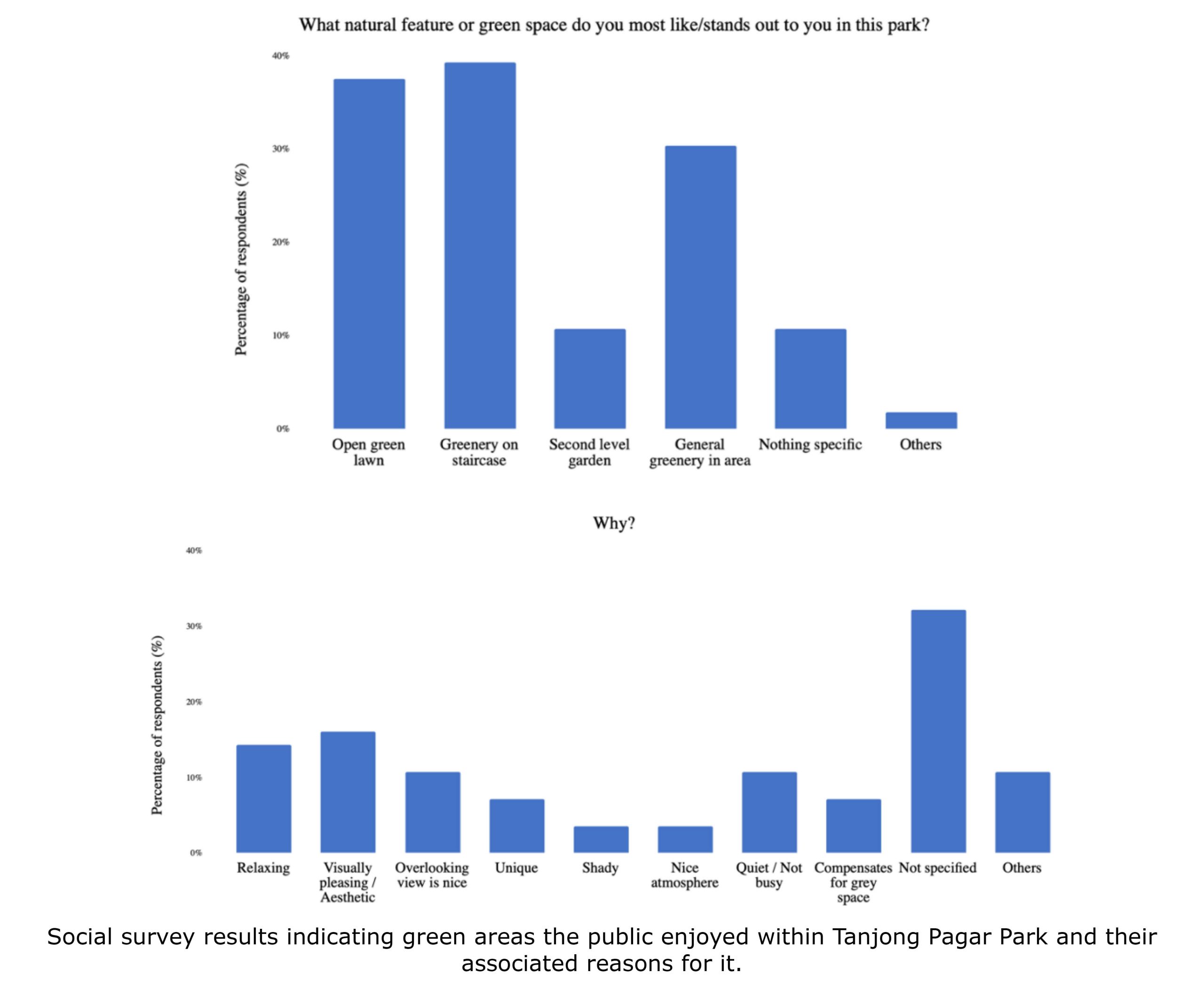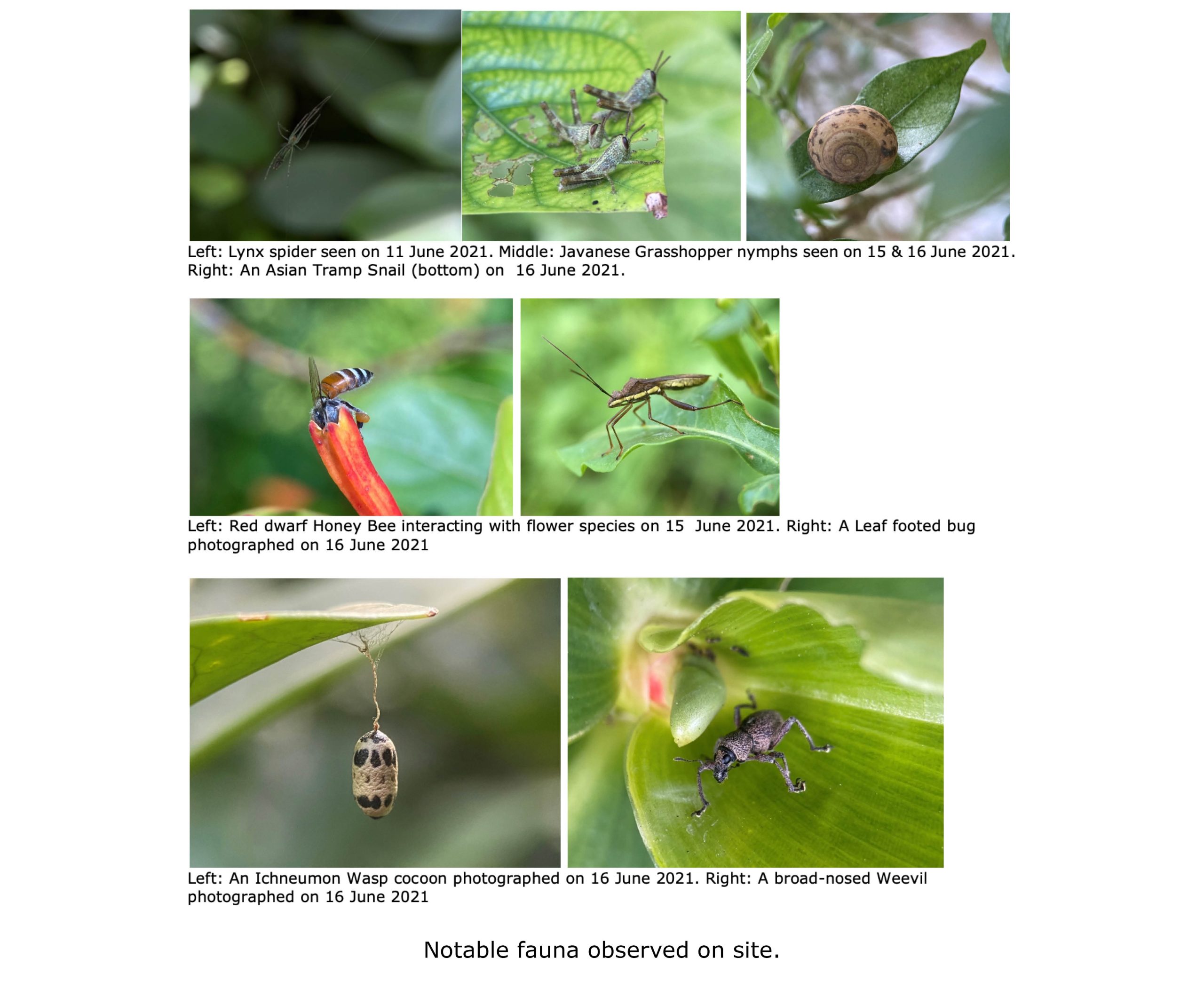-
Designer
Cicada Landscape
-
Client
Guocoland Ltd.
-
Location
Singapore
-
Scale
District
-
Status
Built
-
Services
Biodiversity Survey & Impact Assessment, Ecosystem Service Assessment, Social Impact Assessment
-
Use
Nature park
-
Year
2021 - 2022
Tanjong Pagar Park, Singapore



Project Summary
The Tanjong Pagar Park is an integrated urban park designed as a community space adjacent to the Tanjong Pagar Centre in downtown Singapore. It comprises of various landscape elements including a lawn, multi-tiered vegetation, tree plaza, water court, rooftop gardens, stepped landscaped gardens and a wide open space sheltered by a glass canopy nestled against the backdrop of OASIA Hotel Downtown – another project that bioSEA was involved in. The open space hosts a diversity of community events such as fitness, health and lifestyle.
bioSEA conducted an in-depth biodiversity assessment to quantify the benefits of the park’s greenery and water features. A total of 95 species were recorded from Tanjong Pagar Park. Within a 500m distance from Tanjong Pagar Park, it ranked second in species count only after Shenton Way Green which had a total of 133 species. Tanjong Pagar Park had more biodiversity than other neighbourhood parks such as Peck Seah & Tras Street Park, Duxton Plain Park and Telok Ayer Park that typically had 60 – 70 species.
The ecosystem service assessment suggested that compared to the past design of the Tanjong Pagar Park, the re-design provided benefits, including 2.72 times solar heat reduction, 1.87 times carbon sequestration and 1.47 times air temperature regulation.
A social survey of 56 respondents was conducted to better understand peoples’ perceptions towards greenery in the urban park and characterize the social, cultural, recreational, aesthetic and biodiversity value people derive from it. The survey revealed that 64% of respondents visit the park for relaxation purposes, while 29% appreciate the natural elements present in the park.
Regarding the park design, one respondent described it as a beautiful place – “[I’ve] been working here since the 90s and have seen it transform from a concrete space with barren fields to one that has a lot more greenery in its landscape’.
The survey overwhelmingly indicated that 89% of respondents believe it is crucial to have green spaces in urban areas. Approximately 50% of participants stated that this belief is primarily driven by the stress-relieving benefits provided by green environments. Moreover, 75% of respondents agreed that the design of the park affects the temperature and air quality within its boundaries. The social survey reaffirmed how the transformation of Tanjong Pagar Park’s landscape through the integration of nature-inclusive design was pivotal for the people.
